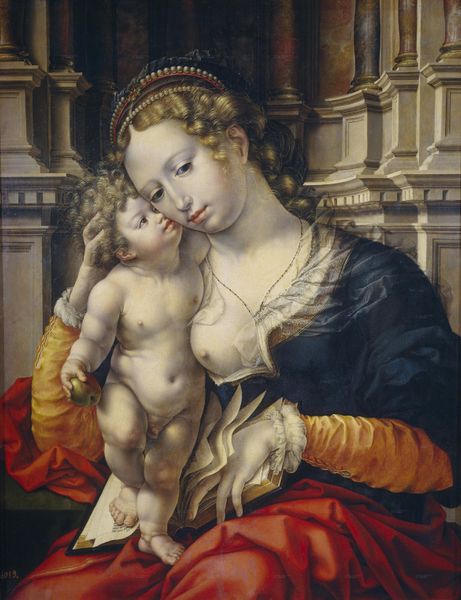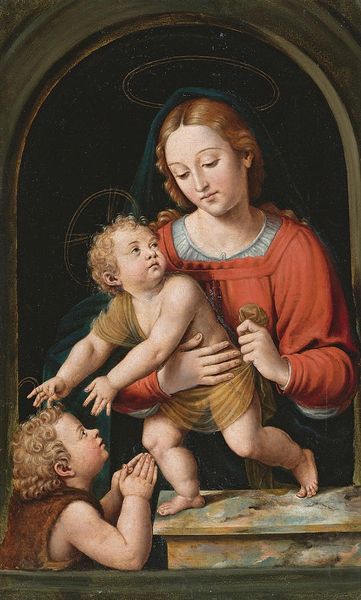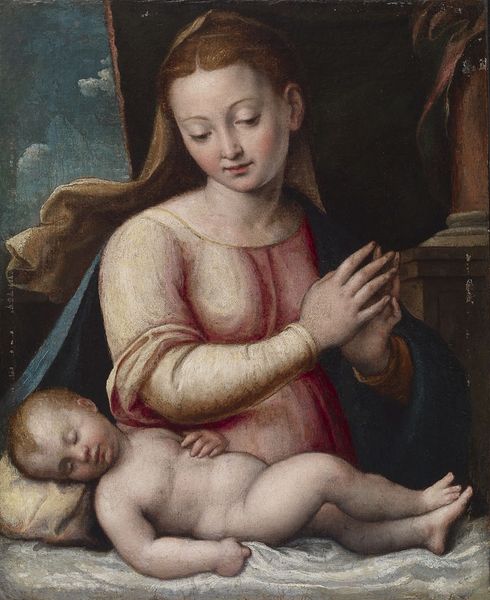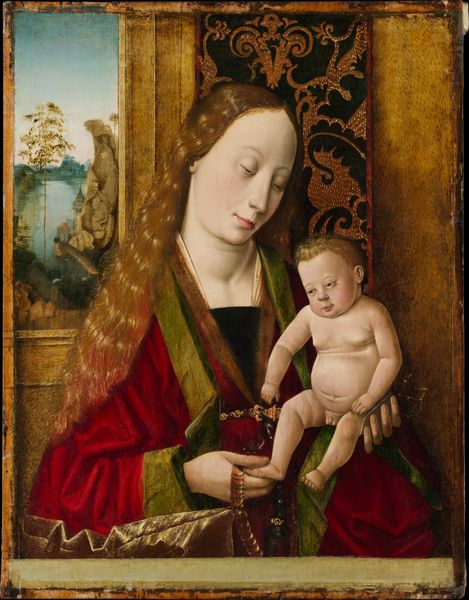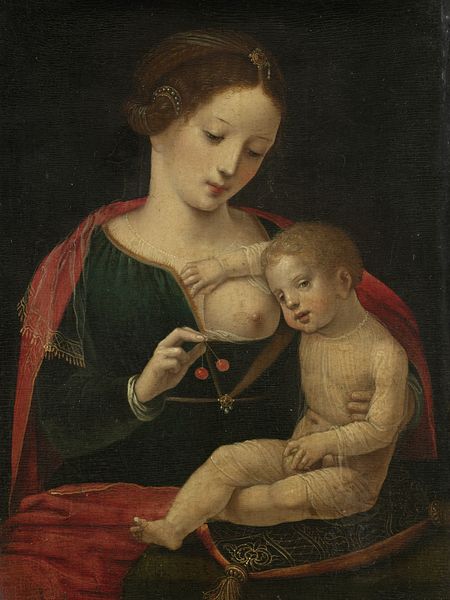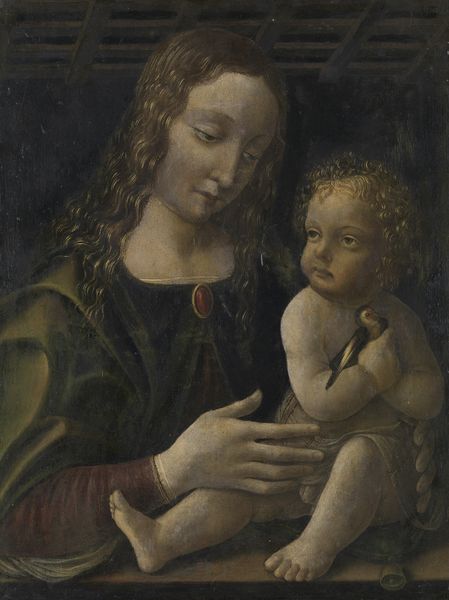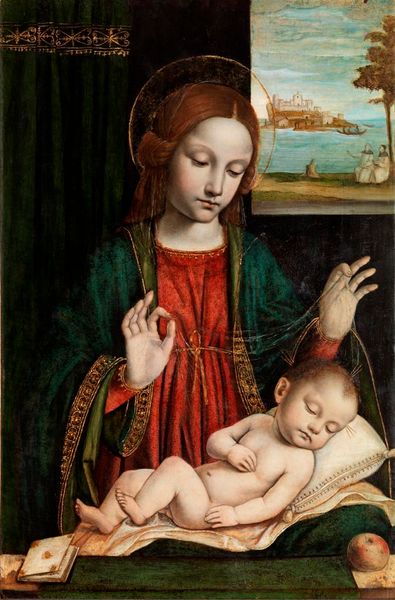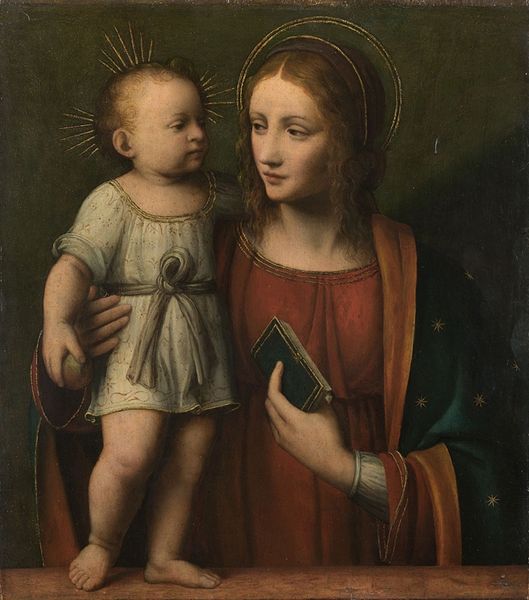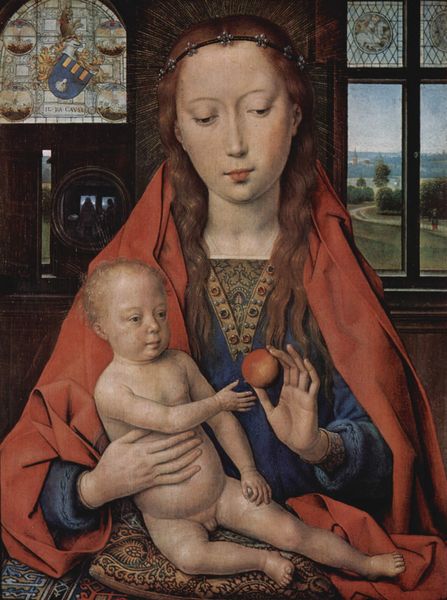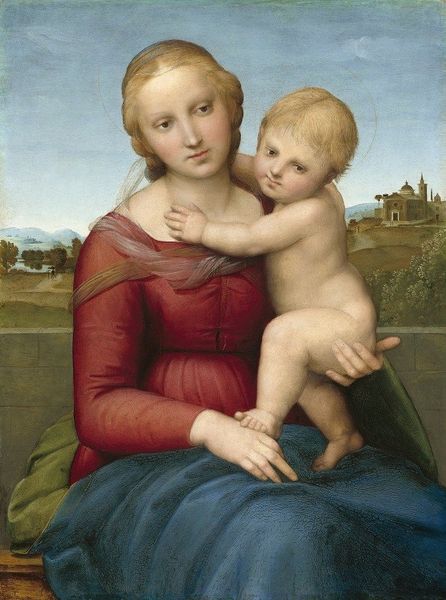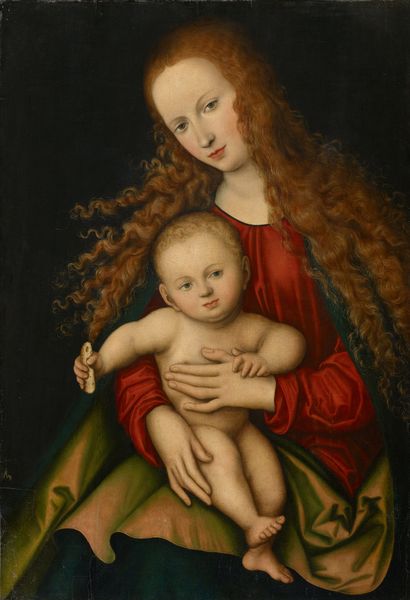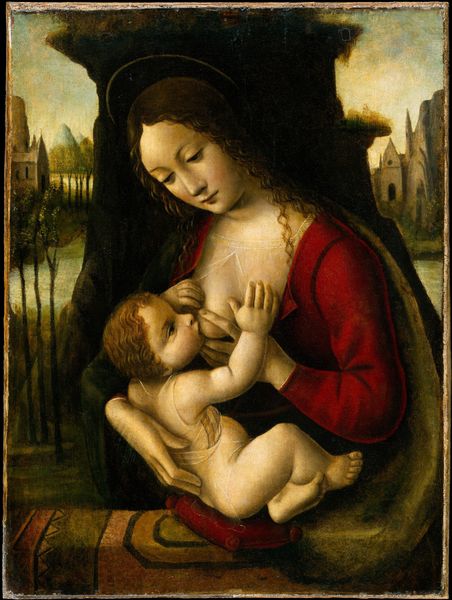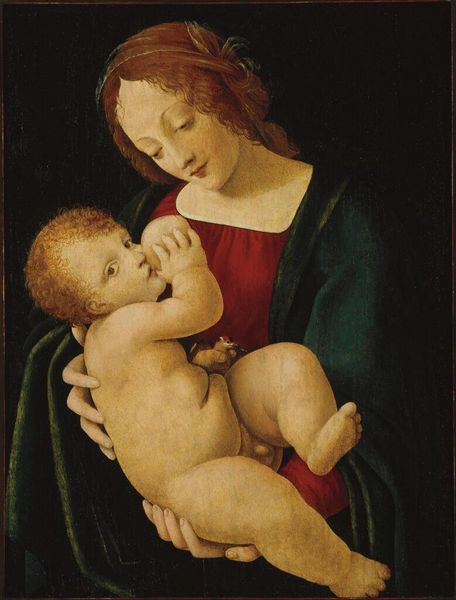
painting, oil-paint, fresco
#
portrait
#
painting
#
oil-paint
#
fresco
#
oil painting
#
italian-renaissance
#
nude
#
portrait art
Copyright: Public domain
Curator: This piece is traditionally titled "Madonna and Child," and is attributed to Defendente Ferrari, an artist of the Italian Renaissance. What immediately strikes you? Editor: The subdued palette contrasted with the bold geometry feels intentional. It’s almost like the figures are consciously positioned within a space that seeks to balance both austerity and accessibility, evoking the tensions inherent in idealized representations of motherhood. Curator: You know, artistic patronage during the Italian Renaissance played a vital role in defining the aesthetic values reflected in works like this. Understanding the patrons and their socio-political influence on the artist, especially in commissions related to religious icons like Madonna, can tell us a lot about this artistic expression. Editor: Absolutely. And if we are to examine it under a critical lens, we also have to address the implications of the power dynamics. The maternal body, in this rendering, feels laden with symbolic expectation—particularly from an art-historical standpoint where such paintings often acted as visual reinforcements of dominant narratives about female identity. Curator: What about technique? I'm particularly interested in the material history of "Madonna and Child." Given the likely function of such a piece, was it fresco or panel, and how would its placement affected its creation and preservation? Editor: Knowing that Ferrari explored oil paint alongside traditional fresco offers possibilities, particularly in terms of color depth and layering, and can tell us how those methods could lend themselves to various symbolic portrayals. For instance, oil allows for subtler shading and detail—perhaps hinting at psychological nuances within Mary’s portrayal— while fresco suggests a broader public or even a more immediate, perhaps architectural integration. Curator: Those choices create an interplay that asks viewers to critically assess their preconceived notions. Editor: It certainly pushes beyond passive viewing, demanding a rigorous assessment of inherited cultural values and their implications for marginalized genders. A rewarding exercise for a work that continues to speak volumes.
Comments
No comments
Be the first to comment and join the conversation on the ultimate creative platform.
